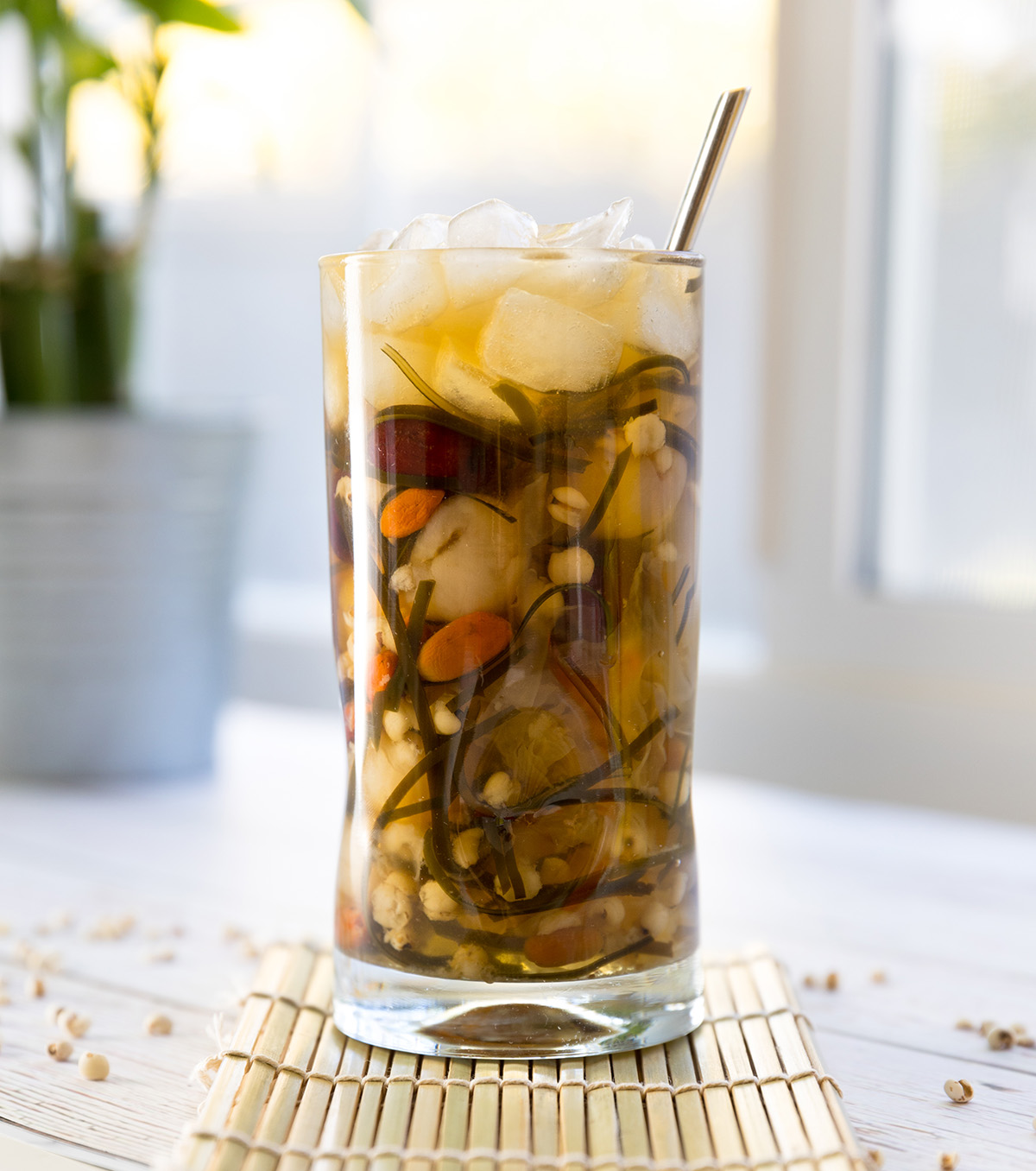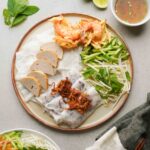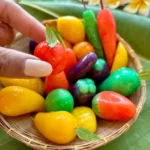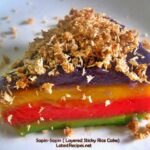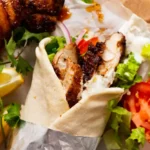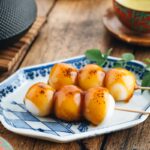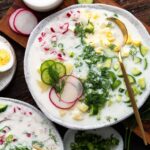Vietnamese cuisine is renowned for its vibrant flavors and diverse textures. The world of Vietnamese desserts showcases this variety perfectly, offering treats that range from sweet soups to intricate cakes. Each dessert offers a unique taste experience that reflects the culture and traditions of Vietnam.
Why are Vietnamese desserts worth exploring? They are often made with unique ingredients like pandan, sticky rice, and coconut milk, providing a delightful contrast to more familiar sweets. In this article, you’ll discover 23 must-try Vietnamese desserts that capture the essence of this rich culinary heritage.
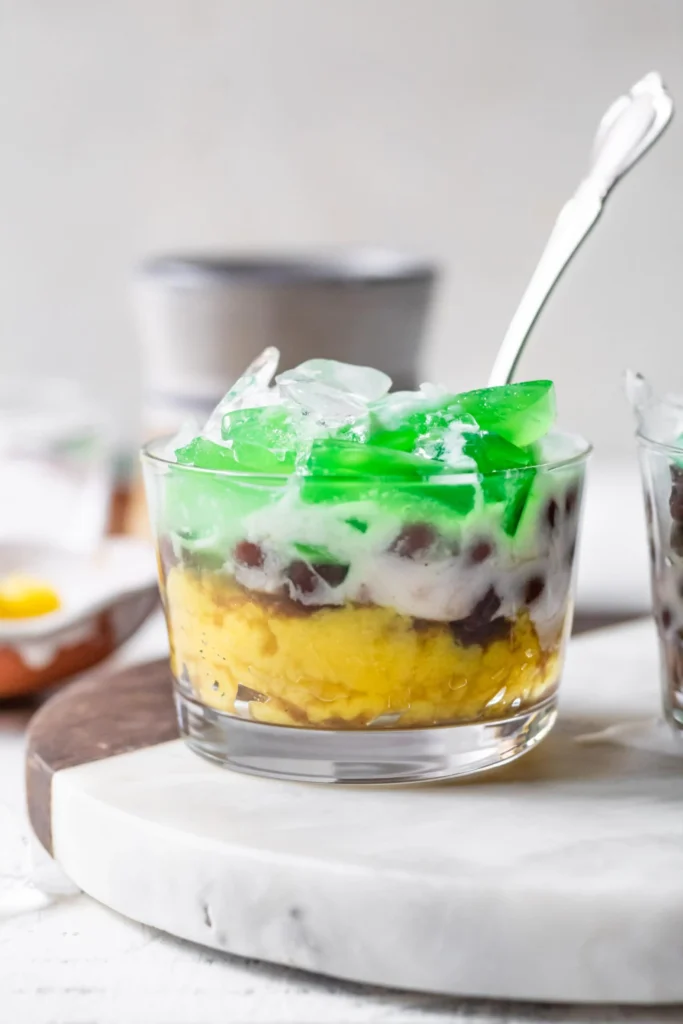
1) Che Ba Mau
Che Ba Mau, also known as the Vietnamese Three Color Dessert, is a feast for the eyes and the taste buds.
The dessert features three distinct layers, each with its own texture and flavor. The first layer is usually sweetened mung beans, which are soft and lightly sweet.
The second layer is made from red beans, adding a different texture and a hint of sweetness.
The third layer often includes pandan jelly or agar-agar, which brings a delightful chewiness and a vibrant green color.
To bring it all together, a coconut milk sauce is poured over the layers. This sauce is both creamy and slightly salty, balancing the sweetness of the beans and jelly.
Che Ba Mau is typically served chilled in a tall glass. A quick stir before eating mixes the layers, creating a harmonious blend of flavors and textures.
This dessert is perfect for hot days and is a popular street food in Vietnam. You can easily find it in Vietnamese cafes and dessert shops.
Make sure to try Che Ba Mau whenever you get a chance. Its unique combination of ingredients and flavors is sure to leave a lasting impression.
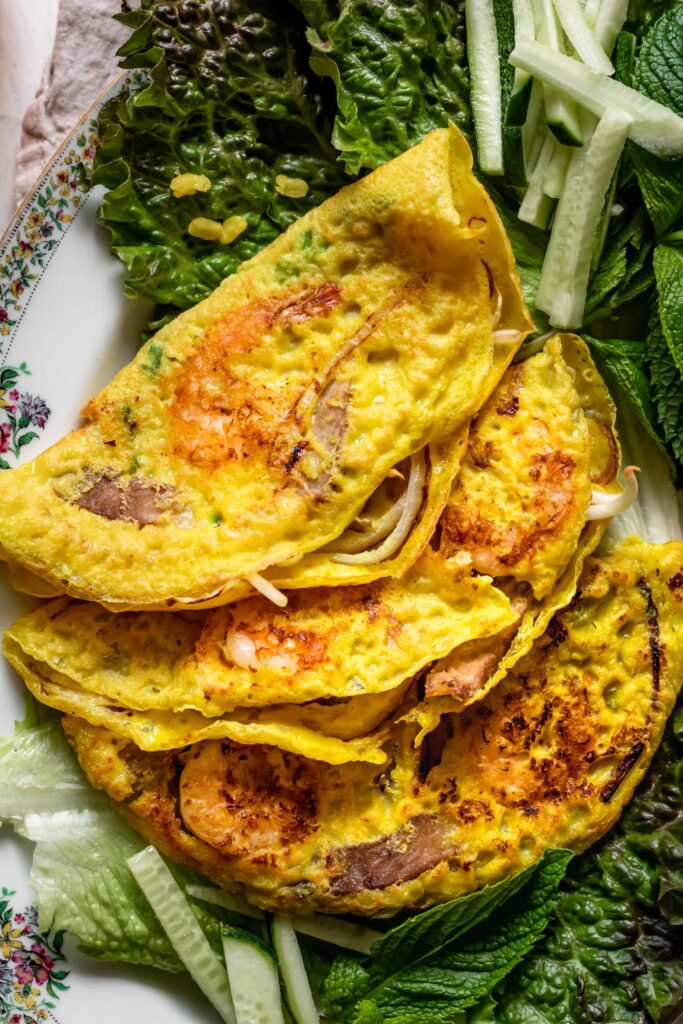
2) Banh Xeo
Banh Xeo, also known as Vietnamese sizzling crepes or pancakes, is a popular street food in Vietnam.
These crepes are known for their crispy texture and savory fillings. The batter is made from rice flour, water, coconut milk, and turmeric, giving Banh Xeo its distinct yellow color.
To cook Banh Xeo, you pour the batter into a hot, oiled pan, spreading it thin. The crispy crepe is then filled with ingredients like pork, shrimp, and bean sprouts before being folded over.
Once cooked, Banh Xeo is typically served with a variety of fresh herbs and lettuce. You wrap a piece of Banh Xeo in the lettuce along with some herbs for added flavor and crunch.
It’s common to dip each bite into nuoc mam, a savory and slightly sweet fish sauce-based dipping sauce. Each region in Vietnam has its own twist on Banh Xeo, offering unique flavors and styles.
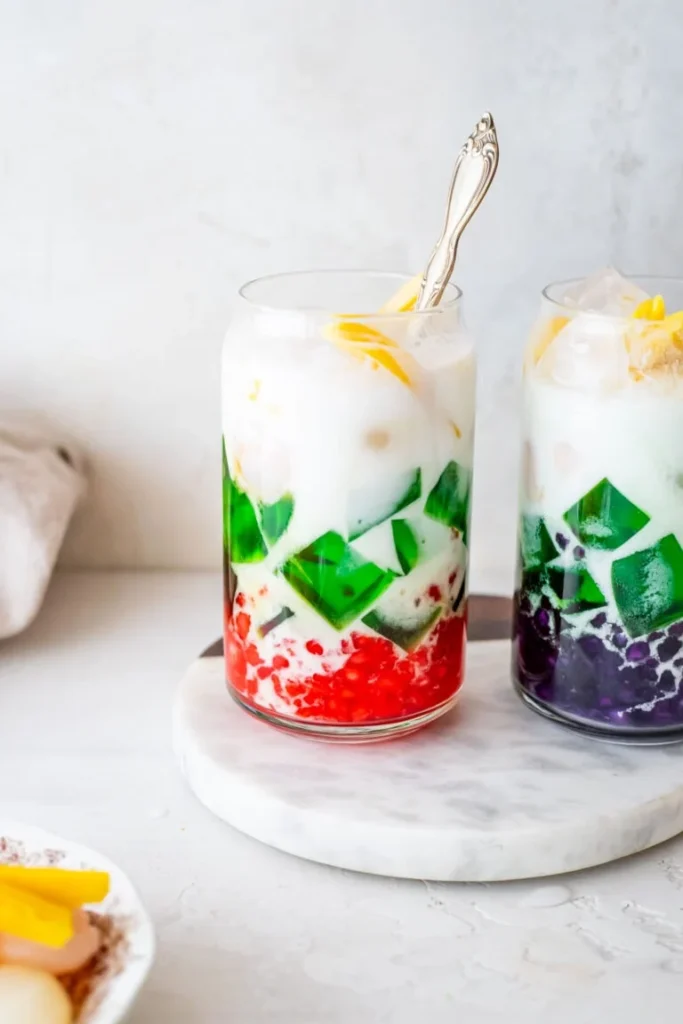
3) Che Thai
Che Thai is a delightful Vietnamese fruit cocktail that’s both refreshing and sweet.
To make Che Thai, you start with a mix of fresh fruits like jackfruit, lychee, and longan. Open the coconut and set aside the juice. Carve out slices of coconut meat to add to the mix.
Combine coconut milk and the saved coconut juice. Add a sweet syrup gradually, about half a cup at a time, adjusting to taste.
A unique aspect of this dessert is water chestnuts colored with red food coloring. Mix them with tapioca starch to coat, then boil until they become chewy.
For an extra cooling effect, you can stir ice cubes into the coconut milk base. Allow the completed Che Thai to chill in the fridge for 1-2 hours before serving. Garnish with fresh mint leaves and toasted coconut.
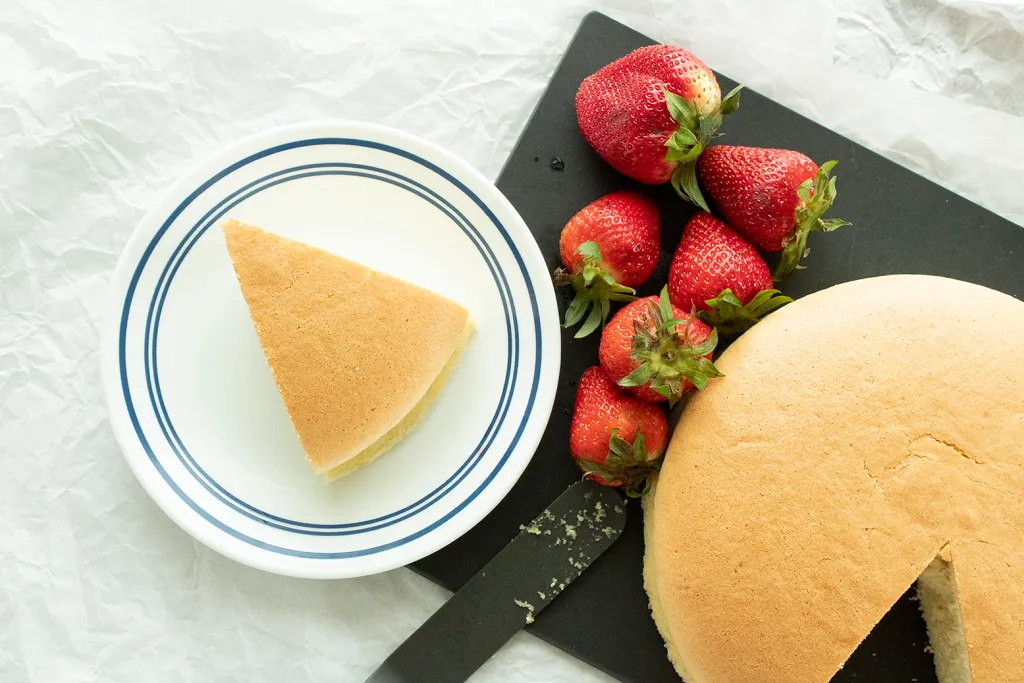
4) Banh Bong Lan
Banh Bong Lan is a Vietnamese sponge cake that has roots in French cuisine. This cake is known for its light and fluffy texture, which comes from whipped egg whites. The name “Banh Bong Lan” translates to “orchid cake,” as the cake puffs up beautifully like a blooming orchid.
To make Banh Bong Lan, you need basic ingredients like eggs, flour, sugar, and vanilla. You start by separating the egg whites from the yolks. Whip the egg whites until stiff peaks form. This process gives the cake its airy texture.
Next, you mix the egg yolks with sugar until creamy. Gradually fold in the whipped egg whites to keep the mixture fluffy. The batter is then poured into a cake pan and baked in a water bath. This method helps the cake cook evenly and stay moist.
Banh Bong Lan is not overly sweet, making it a great dessert for those who prefer something light. It pairs well with tea or coffee. Some variations include adding a bit of pandan extract for flavor and color.
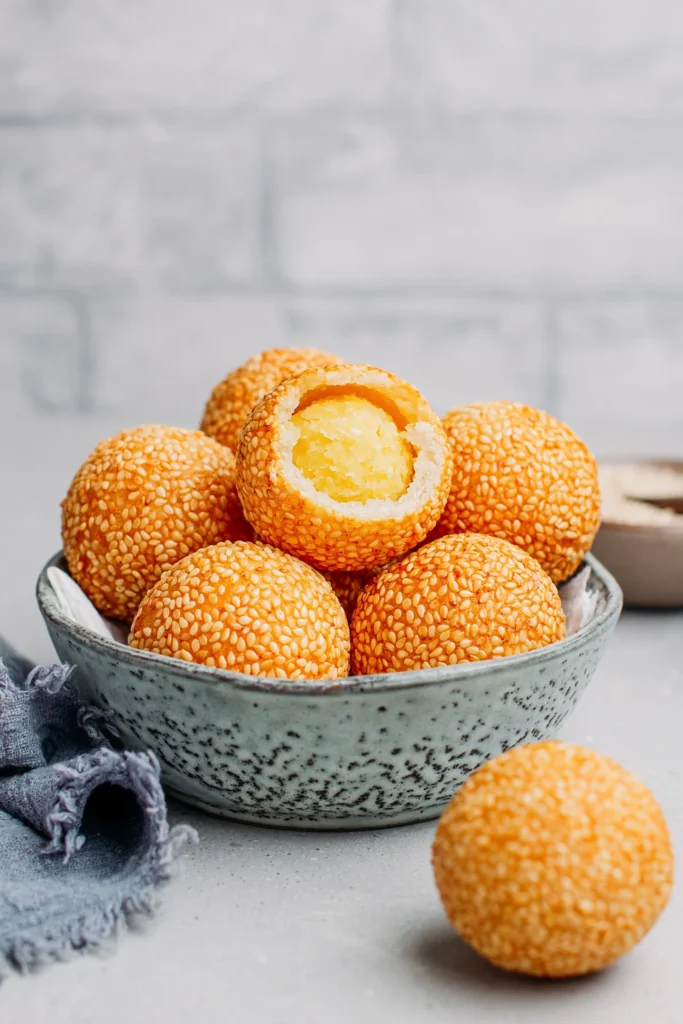
5) Banh Cam
Banh Cam, also known as Vietnamese fried sesame balls, is a popular Vietnamese dessert. These crispy treats have a chewy texture with a sweet mung bean filling inside.
To make Banh Cam, you start by soaking mung beans in hot water. After soaking, cook the mung beans until they are soft and mash them into a paste.
Next, prepare the dough using rice flour. Scoop out a small amount of dough, flatten it, and place a ball of mung bean paste in the center. Wrap the dough around the paste, forming a ball.
Roll the balls in sesame seeds to coat them evenly. Heat vegetable oil to around 350°F (175°C) in a deep pot or wok. Fry the balls in batches, ensuring they are not overcrowded.
Cook the balls until they are golden brown, which usually takes about 10 minutes. Remove them using a slotted spoon and place them on paper towels to drain excess oil.
Banh Cam is best enjoyed warm. The combination of the crunchy sesame crust and the soft, sweet filling makes it a delightful treat for any occasion.
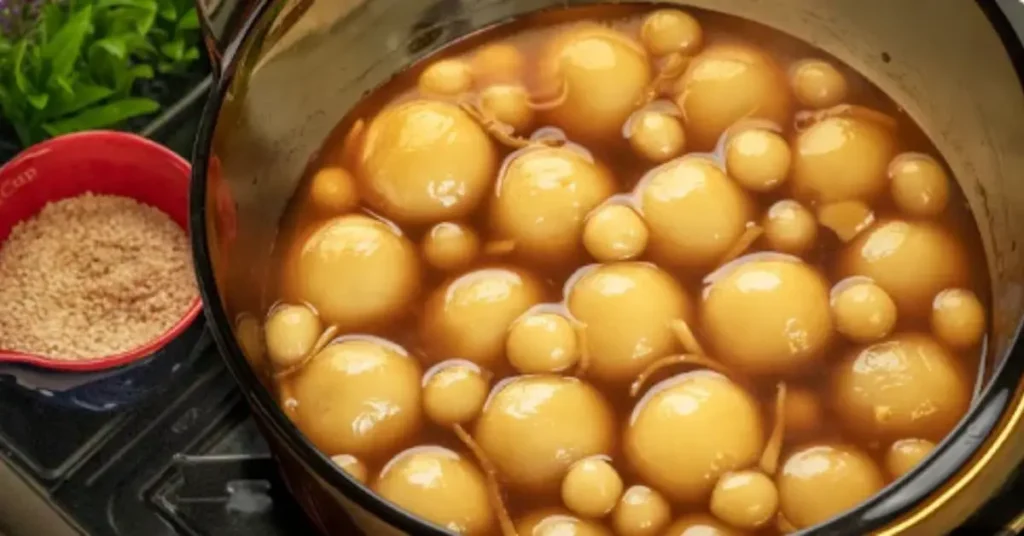
6) Che Troi Nuoc
Che Troi Nuoc is a classic Vietnamese dessert made from glutinous rice flour. The dough is usually filled with a sweet mung bean paste. Sometimes, a small sugar cube is used instead. This gives a pleasant surprise when you bite into it.
These rice balls are cooked in boiling water. When they start floating, they are ready. This takes about 5-7 minutes. Once cooked, they are transferred into a pot of ginger syrup. The syrup is made by simmering ginger slices with water and sugar, giving a warm and spicy flavor.
The dessert is often served warm. It is topped with a drizzle of rich coconut milk. Some recipes also suggest sprinkling toasted sesame seeds or crushed peanuts on top for added texture and taste.
Che Troi Nuoc is a popular choice during festivals and celebrations. It is comforting and rich in flavors, making it a beloved treat in Vietnamese cuisine. You can enjoy it at any time of the year, but it is especially satisfying during colder months.
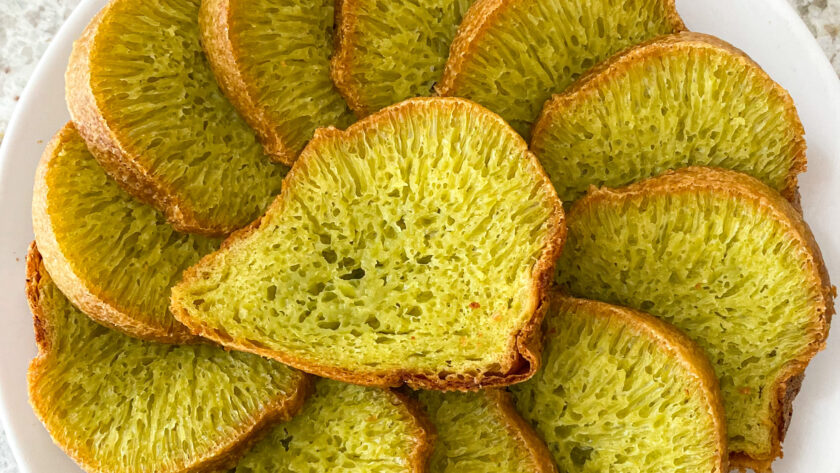
7) Banh Bo
Banh Bo is a classic Vietnamese dessert known for its unique texture and flavor. This dessert is also called Vietnamese honeycomb cake. It has a spongy, airy texture that resembles a honeycomb.
The cake is typically made with rice flour, coconut milk, and sugar. Pandan extract often gives it a vibrant green color and a subtle, nutty taste.
To make Banh Bo, you mix the ingredients and let the batter ferment. This helps create the cake’s signature air bubbles. The cake is then steamed or baked until it sets.
You can enjoy Banh Bo on its own or with a cup of hot tea. Its mildly sweet flavor and light texture make it a delightful treat.
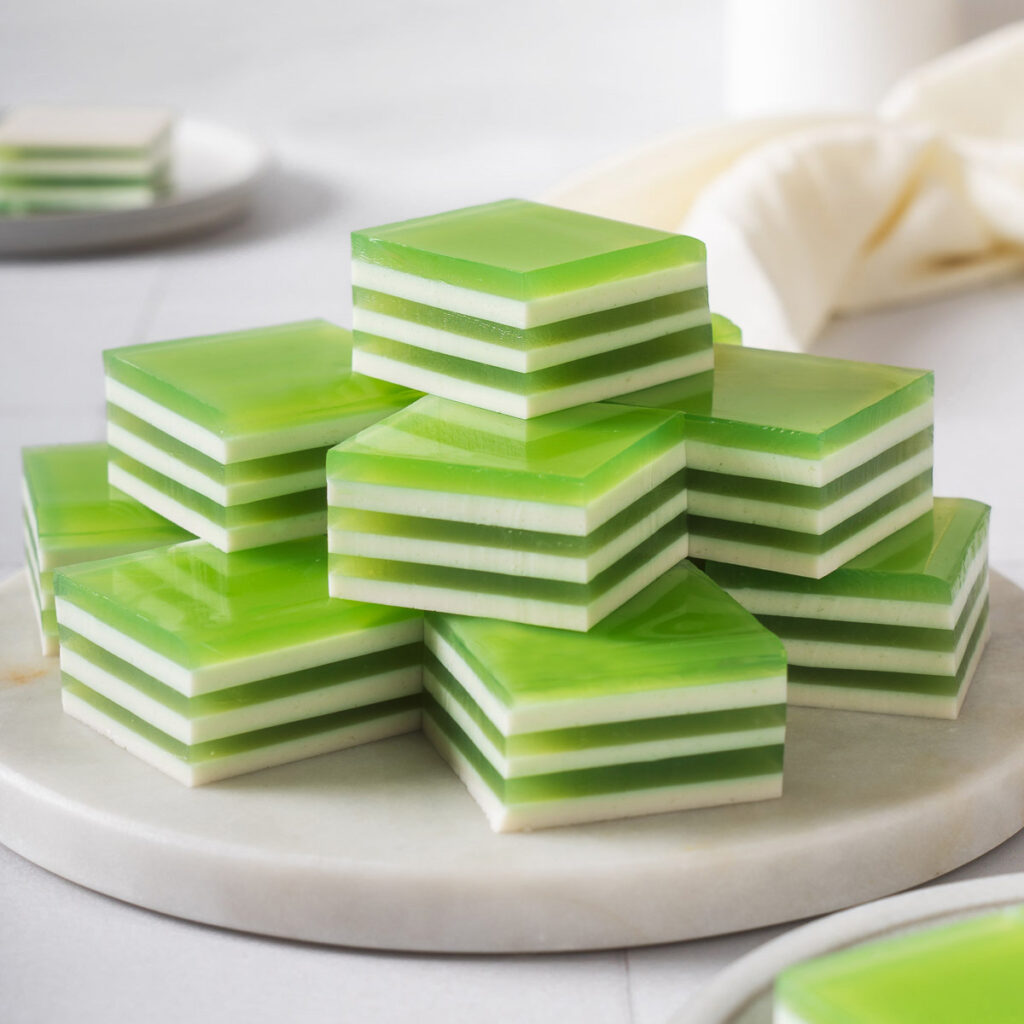
8) Rau Cau Dua
Rau Cau Dua, also known as Vietnamese Coconut Jelly, is a refreshing dessert with tropical flavors.
It’s made using agar agar, a gelatinous substance derived from seaweed. This ingredient helps create a firm yet delicate jelly texture.
You’ll need coconut milk, sugar, and sometimes pandan leaves for additional flavor.
Start by dissolving agar agar powder in water and bringing it to a boil. Mix in the coconut milk and sugar, and continue stirring until everything is well combined.
Pour the mixture into molds or a shallow dish and let it cool to room temperature. Once cooled, refrigerate until set.
Rau Cau Dua is often enjoyed chilled, offering a cool treat perfect for hot days. It’s simple, light, and wonderfully coconutty.
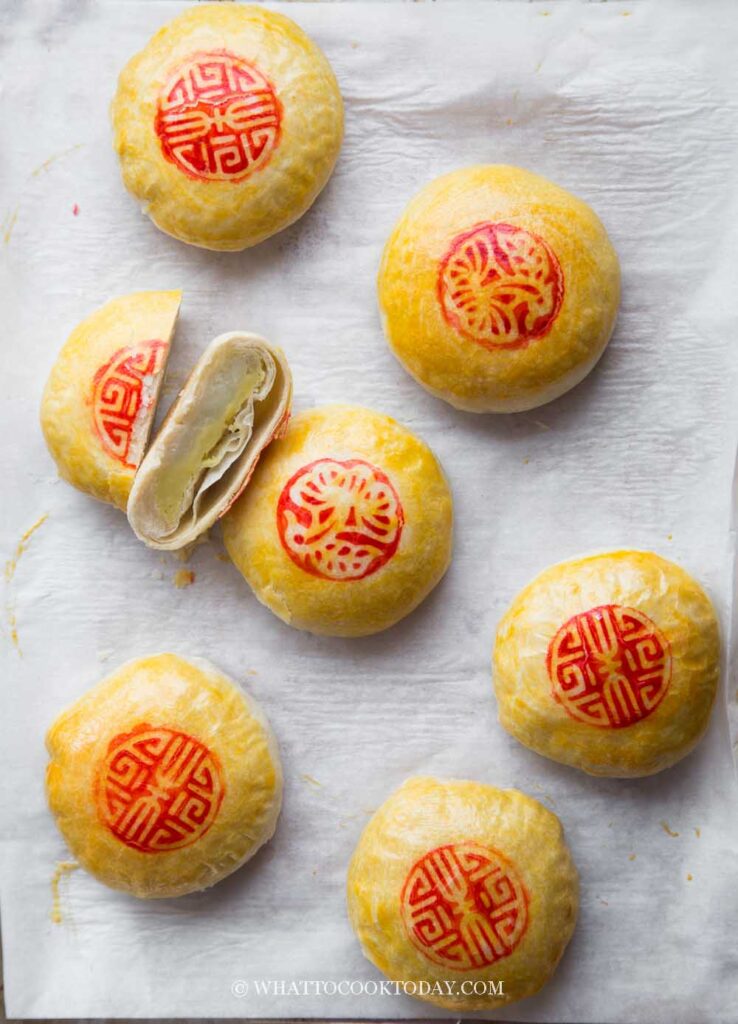
9) Banh Pia
Banh Pia is a traditional Vietnamese pastry with a unique flavor profile. It has a flaky crust and is filled with sweet mung bean paste and durian. The crust is thin and layered, giving it a delicate texture that contrasts nicely with the rich filling.
Making Banh Pia can be tricky because of the technical skill required to achieve the perfect crust and filling. In traditional methods, you need special molds and much practice.
There are different varieties of Banh Pia, including ones with salted egg yolks. These variations add a salty twist to the otherwise sweet dessert.
Modern baking tools have simplified the process, making it more accessible for you to try at home. Enjoy Banh Pia with a cup of tea for a delightful snack.
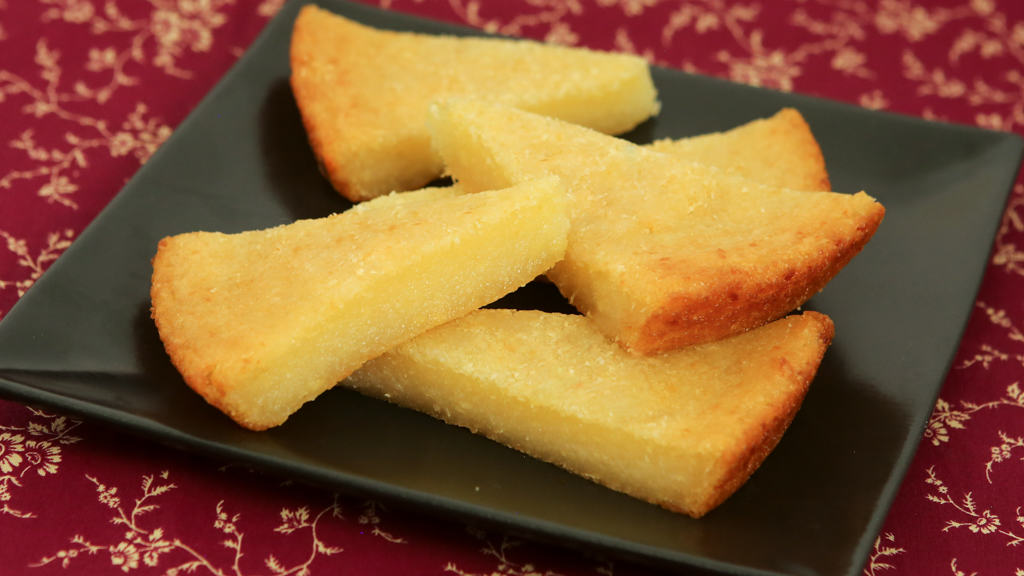
10) Banh Khoai Mi Nuong
Banh Khoai Mi Nuong, also known as Vietnamese Cassava Cake, is a popular dessert made from cassava root. This cake is known for its rich texture and unique flavor, combining sweet and creamy ingredients.
You start by grating or blending the cassava until smooth. This forms the base of the cake.
Mix the cassava with coconut milk, sugar, and sometimes condensed milk for extra sweetness. You can also add melted butter and vanilla extract to enhance the flavor.
The mixture is then poured into a cake pan and baked at 375°F until it turns golden brown. The result is a firm, slightly chewy cake with a delightful coconut aroma.
Let the cake cool before slicing. It’s often served in small squares and makes a perfect snack or dessert. You’ll find that its taste is both comforting and exotic.
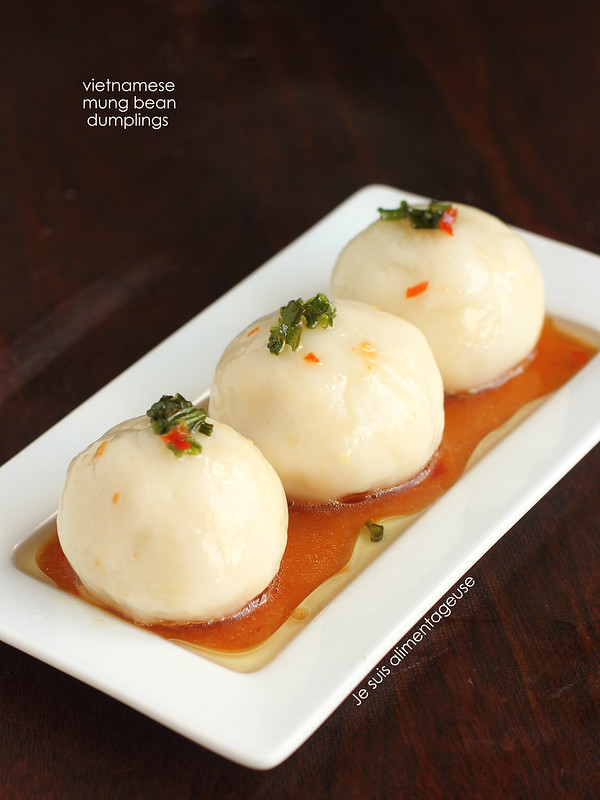
11) Banh It Tran
Banh It Tran is a traditional Vietnamese dessert made from sticky rice flour. It has a chewy texture and is often filled with mung beans or savory ingredients.
To prepare Banh It Tran, start by washing and soaking mung beans for about 30 minutes. Cook them until soft, then mash them to a smooth consistency.
For the dough, mix glutinous and regular rice flours with a little salt. Gradually add water while kneading until the dough becomes smooth and elastic. Divide the dough into equal portions and flatten each into a disc.
Fill each disc with the mashed mung beans and shape them into dumplings. Boil water in a pan and cook the dumplings for about 8-10 minutes. They will float to the top when done.
You can also steam the dumplings for 20-30 minutes. To prevent sticking, you may use a banana leaf or a bit of oil on the steaming surface. When cooked, Banh It Tran has a glossy, white appearance.
Serve these delightful dumplings warm, often topped with onion oil for an extra burst of flavor. Banh It Tran showcases the simplicity and deliciousness of Vietnamese desserts.
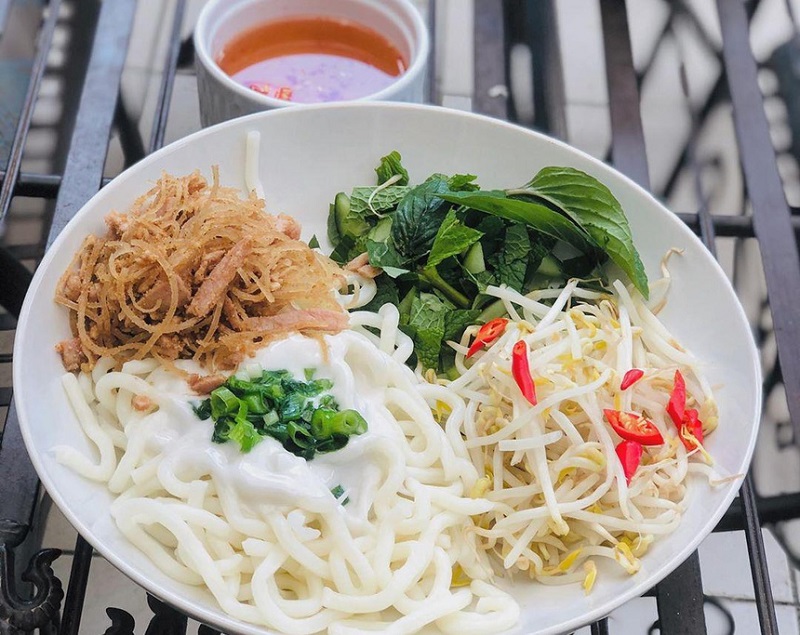
12) Banh Tam Bi
Banh Tam Bi is a popular Vietnamese dish that combines rice noodles with pork and shredded pork skin. It’s a unique and tasty creation that offers a mix of textures and flavors. The noodles are soft and chewy, while the pork skin adds a slight crunch.
You usually start with thick rice noodles, which are made from rice flour and water. These noodles are then topped with pork and pork skin that have been mixed with spices and roasted rice powder. The dish is often garnished with fresh herbs like mint and basil, adding a burst of freshness.
A key element of Banh Tam Bi is the coconut sauce. This sauce, made from coconut milk, is creamy and sweet, adding richness to the dish. The sauce is poured over the noodles and pork, tying all the elements together.
You might also find pickled carrots and daikon radish as part of the dish. These pickled vegetables add a tangy contrast to the sweet coconut sauce and savory pork. When you take a bite, you experience a delightful blend of flavors and textures, making Banh Tam Bi a memorable dish.
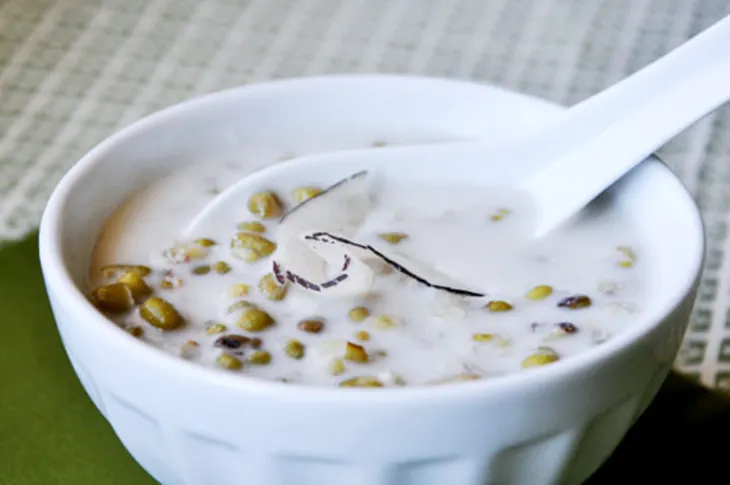
13) Che Dau Xanh
Che Dau Xanh, also known as Vietnamese Mung Bean Dessert, is a popular and sweet treat in Vietnam.
This dessert features mung beans as the main ingredient. To make it, you first need to rinse and soak the mung beans for a few hours or overnight.
After soaking, you simmer the beans until they are tender. You can add water and sugar. Then, stir in coconut milk for a rich flavor.
Some recipes use small tapioca pearls for added texture. If you like, you can also add a pinch of salt to balance out the sweetness.
Che Dau Xanh is often served chilled. You can refrigerate it for at least an hour before serving. This dessert is especially refreshing on hot days.
Enjoy Che Dau Xanh on its own or alongside other Vietnamese sweets. It is a simple yet delightful dish that showcases traditional Vietnamese flavors.
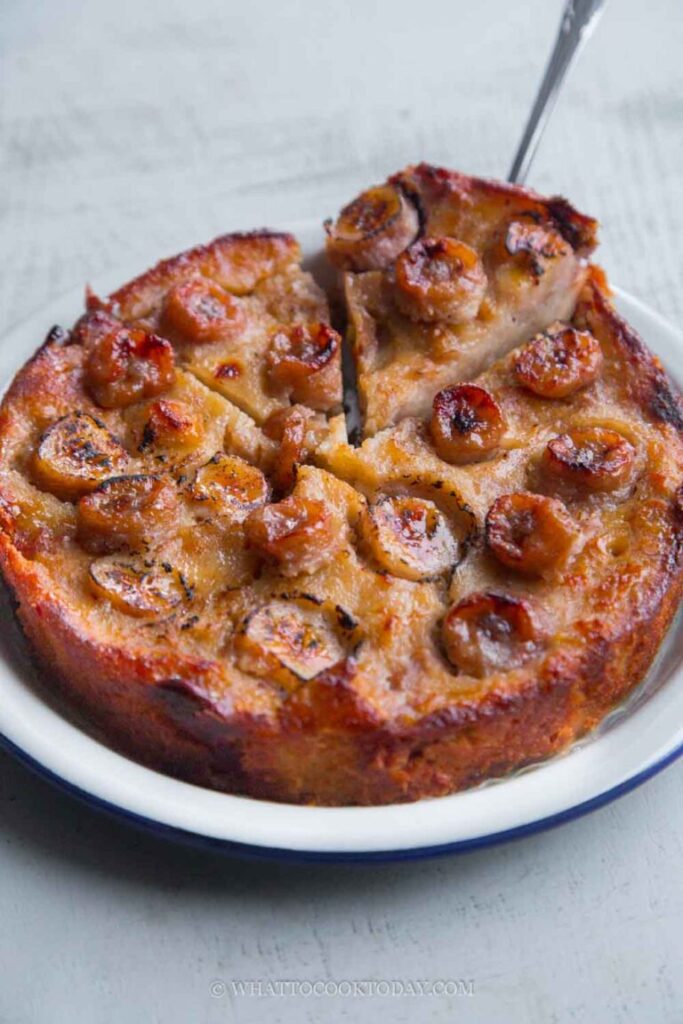
14) Banh Chuoi
Banh Chuoi, a classic Vietnamese dessert, centers around bananas. There are two main versions: Banh Chuoi Hap (steamed banana cake) and Banh Chuoi Nuong (baked banana cake).
You can use ingredients like sliced bananas, coconut milk, condensed milk, sugar, and sometimes bread or eggs. The coconut milk gives it a creamy texture.
For Banh Chuoi Hap, you’ll need to steam the mixture for about 35 minutes. The result is a firm cake with a chewy texture.
In Banh Chuoi Nuong, you bake the mixture at 350 degrees Fahrenheit. The baking process makes the outside crisp, while the inside remains soft.
Some recipes suggest marinating the bananas in sugar and rum. This gives the cake a deeper, more complex flavor.
You can garnish this dessert with shredded coconut. This adds a bit of texture and enhances the coconut flavor.
Enjoy Banh Chuoi at room temperature or chilled. It’s a versatile dessert that highlights the natural sweetness of bananas.
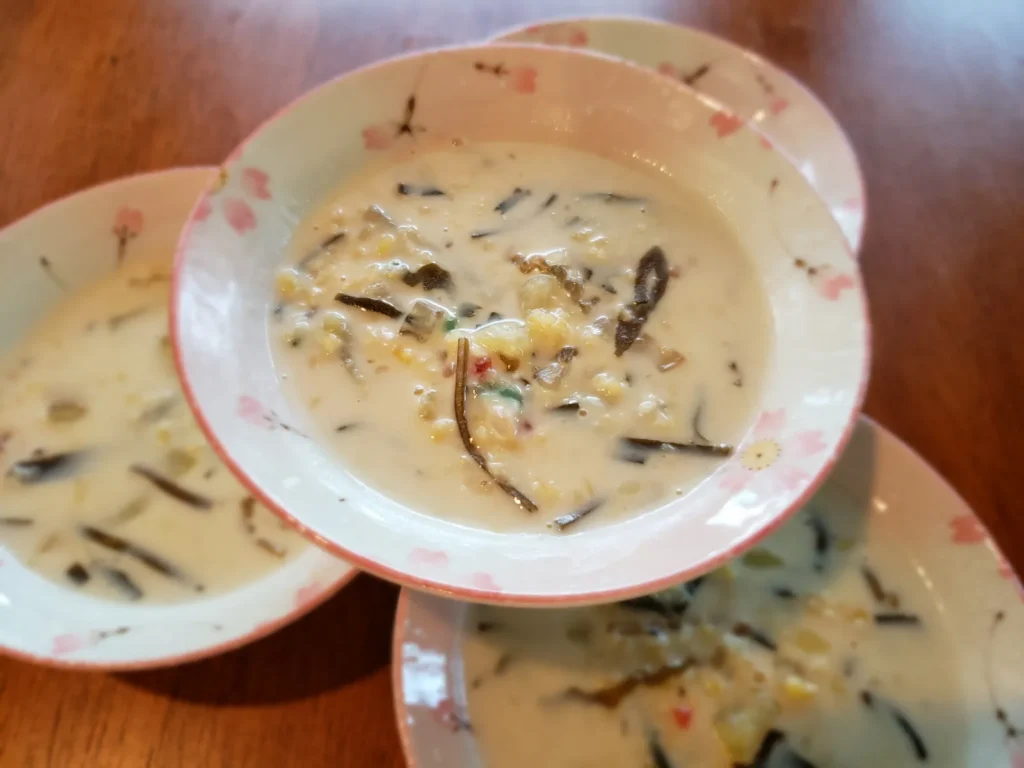
15) Che Ba Ba
Che Ba Ba is a popular Vietnamese dessert that is both sweet and creamy. It features a mix of different ingredients like sweet potatoes, taro, cassava, and coconut milk, making it a rich and satisfying treat.
You will first need to peel and cut the sweet potatoes, taro, and cassava into small, bite-sized pieces. These need to be boiled until they are tender but still hold their shape.
Next, you will combine these cooked roots with coconut milk in a pot. Add tapioca pearls to give the dessert a chewy texture. The mixture will need to be simmered until everything is well-integrated.
Che Ba Ba is often sweetened with sugar and sometimes flavored with a bit of vanilla. It can be eaten warm or chilled, depending on your preference.
This dessert is a comforting, homestyle favorite in Vietnamese households and is a great dish to serve at family gatherings or special occasions. Its rich flavors and varied textures make it a memorable treat.
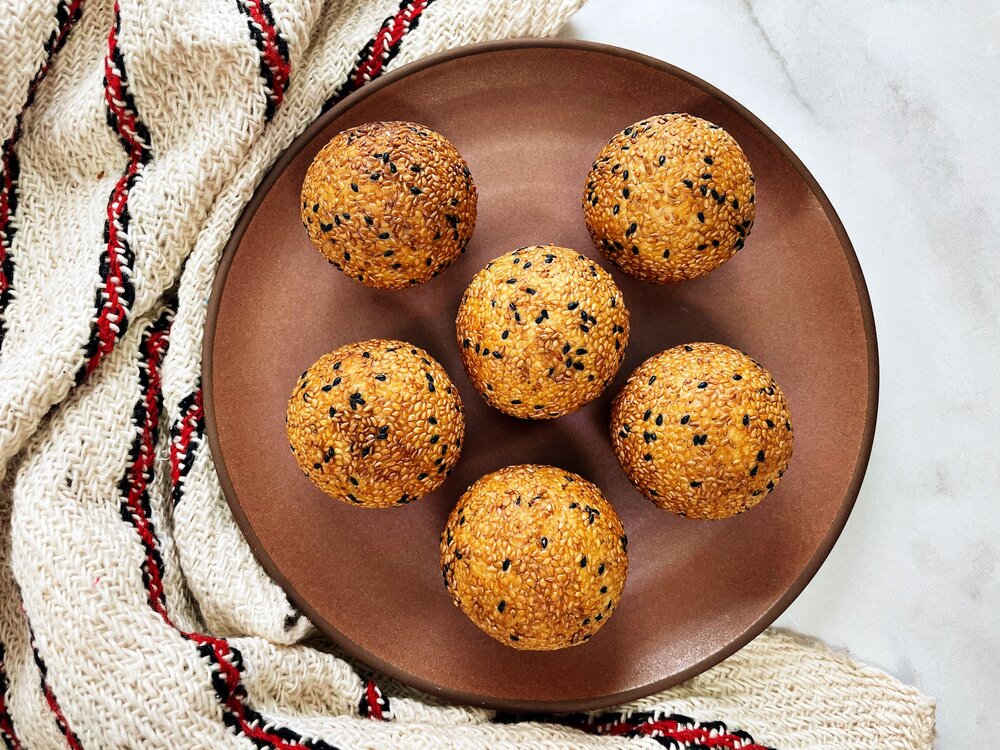
16) Banh Cam Tom
Banh Cam Tom is a unique variant of the popular Vietnamese sesame ball. Instead of the usual sweet mung bean filling, this version contains a savory shrimp filling.
To make Banh Cam Tom, you start with the same rice flour dough used for traditional sesame balls. Flatten the dough into a circle and place a small portion of the shrimp filling in the center.
Seal the dough around the filling and roll it into a ball. Coat the ball with sesame seeds by rolling it in a bowl of seeds until evenly covered.
Heat vegetable oil in a wok or pot to 350°F. Fry the balls in batches, ensuring not to overcrowd the pot. Fry each batch for about 10 minutes or until they turn golden brown.
Remove the balls with a slotted spoon and place them on paper towels to absorb excess oil. Serve hot to enjoy the crispy exterior and flavorful shrimp filling.
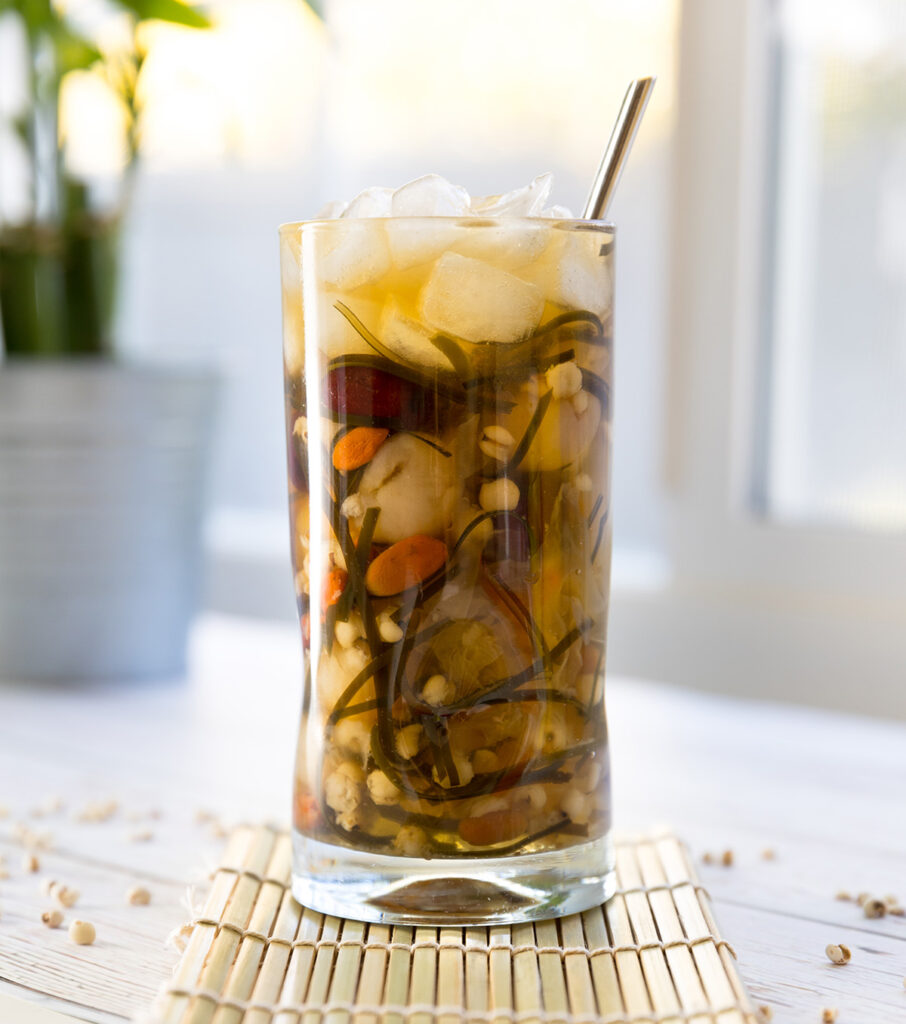
17) Che Sam Bo Luong
Che Sam Bo Luong is a refreshing Vietnamese iced dessert drink. It combines different dried Chinese and Vietnamese herbal ingredients. These include red dates, seaweed, longans, lotus seeds, and pearl barley.
The drink often features other ingredients too, like snow fungus and goji berries. Each adds unique textures and flavors. This mix makes the dessert both tasty and interesting.
To prepare Che Sam Bo Luong, you start by soaking and boiling the dried ingredients. Lotus seeds and pearl barley need an overnight soak. Other ingredients, like seaweed and red dates, soak for a shorter time.
In a pot, bring the ingredients to a simmer. Add rock sugar to taste. Let it cool to room temperature before serving. The dessert is usually enjoyed chilled, which makes it perfect for hot days.
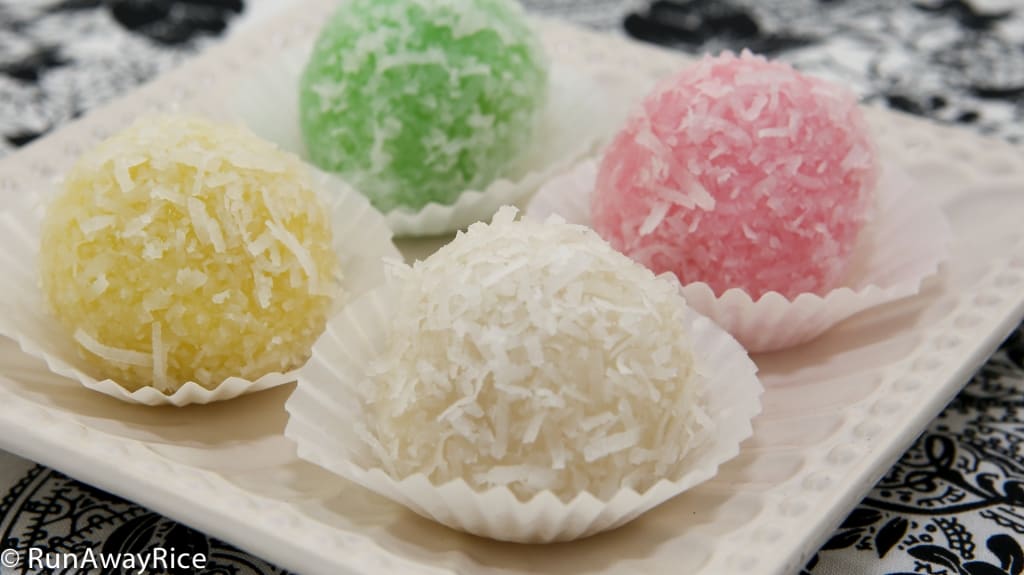
18) Banh Bao Chi
Banh Bao Chi, also known as Vietnamese Snowball Cakes, are delightful coconut-filled treats. They are popular for their chewy texture and sweet, nutty flavor.
To make Banh Bao Chi, you first prepare the filling. Combine desiccated coconut, sugar, salt, and water in a pan. Cook until the mixture is dry, then add crushed peanuts and sesame seeds.
Next, you make the dough. Mix sugar and salt with milk until dissolved. Combine this liquid with glutinous rice flour to form a soft, pliable dough.
Form small balls out of the coconut filling. Then, wrap each filling ball with a portion of the dough. Roll them to form smooth, round snowballs.
After shaping, coat each snowball in grated coconut to give them a fluffy appearance. Enjoy these treats as a snack or dessert. They are especially tasty with a hot cup of tea.
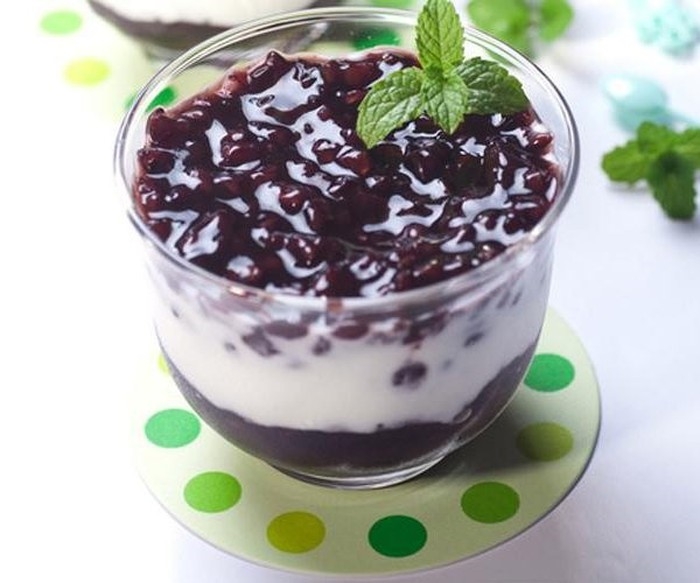
19) Sua Chua Nep Cam
Sua Chua Nep Cam is a popular Vietnamese dessert that blends creamy yogurt with black sticky rice. This treat is enjoyed by many for its unique combination of textures and flavors.
To make Sua Chua Nep Cam, you start by soaking black sticky rice overnight. After soaking, the rice is cooked until tender. Adding a bit of salt helps to enhance its flavor.
Once the rice is fully cooked, honey is typically stirred in, giving a sweet touch to the dish. The rice is then allowed to cool to room temperature before it is combined with yogurt.
The final dish is rich and slightly tangy, thanks to the yogurt, and has a chewy texture from the sticky rice. This dessert is often enjoyed cold, making it very refreshing, especially on a hot day.
Sua Chua Nep Cam is not only delicious but also healthy. The yogurt provides probiotics, which are good for digestive health, and the black sticky rice contains nutrients like fiber and antioxidants.
Try serving Sua Chua Nep Cam as a snack or a sweet finish to your meal. Its unique taste and health benefits make it a great addition to your dessert options.
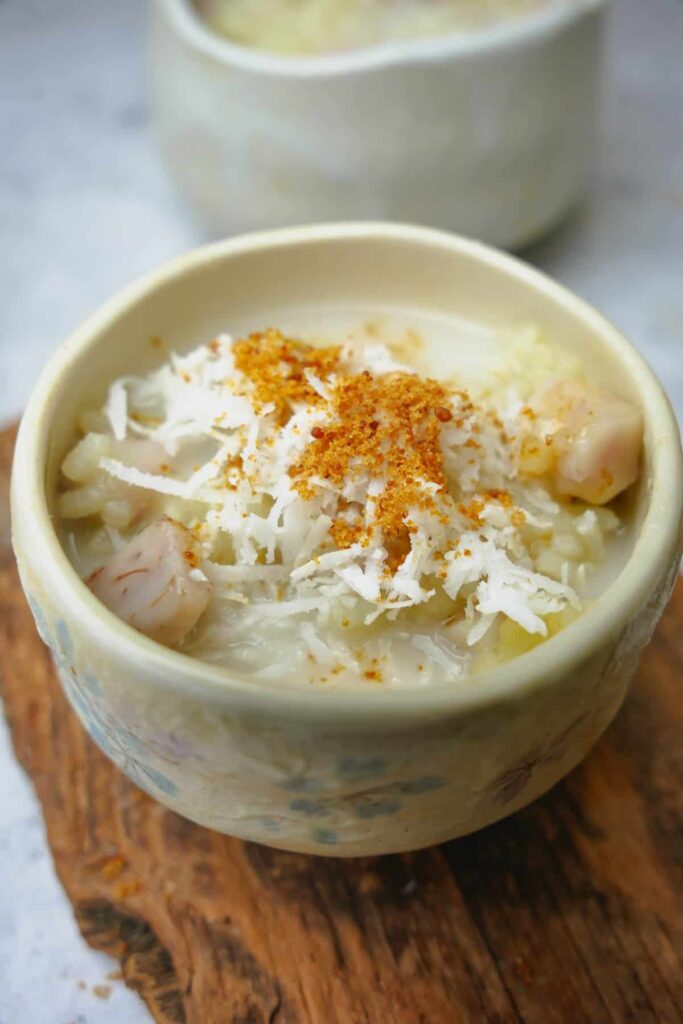
20) Che Khoai Mon
Che Khoai Mon is a traditional Vietnamese dessert that you will love if you enjoy creamy and sweet treats. It is made with taro, a root vegetable known for its starchy texture and subtle flavor. This dessert combines taro with sticky rice, coconut milk, and sometimes pandan leaves for added aroma.
To prepare Che Khoai Mon, you start by cutting the taro into cubes and steaming them until they are tender. Be careful not to overcook the taro, as it can become mushy. After the taro is steamed, it is mixed with cooked sticky rice.
The dessert’s rich flavor comes from the coconut milk. You create a thick coconut sauce by simmering the coconut milk with sugar and a pinch of salt. This mixture is then combined with the taro and rice, creating a creamy, luscious pudding.
Chewy tapioca pearls can also be added for extra texture. This dessert can be served warm or chilled, making it versatile for any season.
The blend of flavors in Che Khoai Mon—sweet, starchy taro and fragrant coconut milk—makes it a beloved choice among Vietnamese desserts. You will appreciate its unique taste and comforting texture.
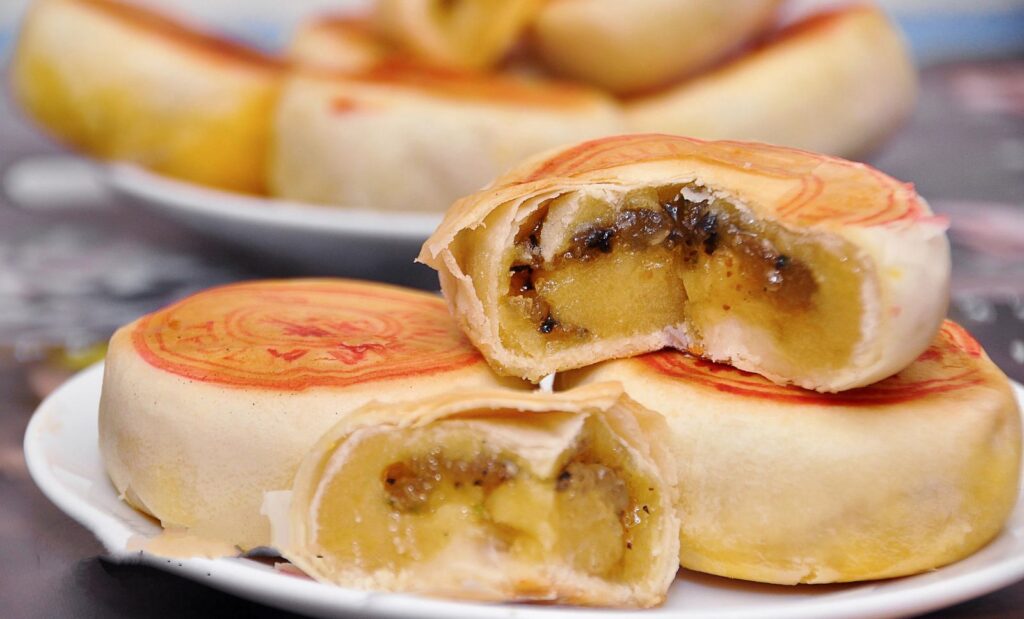
21) Banh Pía
Banh Pía is a traditional Vietnamese pastry with a unique taste and texture. The thin, flaky crust surrounds a sweet mung bean paste and often includes durian or salted egg yolk.
You might be surprised by the combination of flavors, but Banh Pía is loved for this special mix. The egg yolk adds a savory note that balances the sweetness.
Making Banh Pía at home used to be time-consuming and required specialized molds. Today, modern baking tools make it much easier.
If you’re feeling adventurous, try making Banh Pía yourself. Look for recipes that simplify the traditional method.
Enjoying Banh Pía is a delightful way to experience a piece of Vietnamese culture.
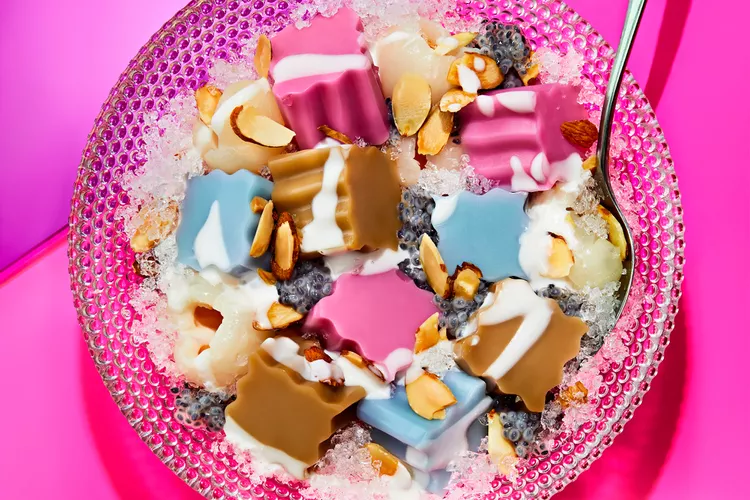
22) Che Khuc Bach
Che Khuc Bach is a delightful Vietnamese dessert that’s similar to panna cotta. It’s known for its soft, jelly-like texture and sweet, creamy taste. This dessert often features almond milk and cream, making it rich and smooth.
You start by soaking gelatin leaves in water until they soften. Then, mix milk, heavy cream, and sugar in a pot. Heat the mixture gently, making sure not to let it boil.
Once the milk mixture is ready, add the softened gelatin and stir until it dissolves completely. Pour the mixture into molds and refrigerate for several hours until it sets.
Che Khuc Bach is often garnished with lychee, longan, or other fruits. This adds a refreshing burst of flavor to the rich, creamy base. Almond slivers or coconut milk are also popular toppings.
When serving, you can cut the set mixture into cubes and present it in a bowl. Pour a bit of sweet syrup or fruit juice over the top for added taste. This dessert is best enjoyed chilled, especially on hot days.
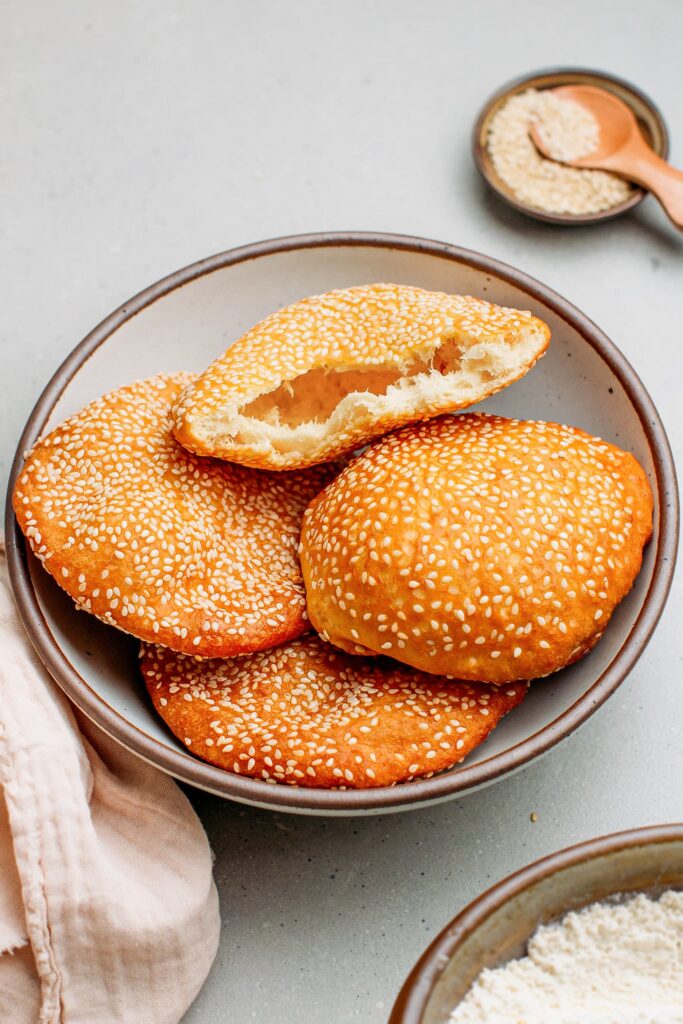
23) Banh Tieu
Banh Tieu is a popular Vietnamese treat. These hollow donuts are light and airy, with a slight sweetness. They’re often sprinkled with sesame seeds.
To make Banh Tieu, you start by pressing dough into thin discs. These are about 5 inches wide. You’ll need to sprinkle both sides with flour and sesame seeds.
Next, the dough needs to rise. Cover the discs and let them sit for about 30 minutes. Heat up 1 1/2 to 2 inches of oil in a deep pot. The oil should be heated to around 350°F.
Once the oil is hot, gently place the dough into it. The dough will puff up quickly. Flip it over once it stops puffing to get an even fry. The result is a golden, crispy donut that’s hard to resist.
History of Vietnamese Desserts
Vietnamese desserts have been shaped by cultural influences and regional variations. These factors have led to a rich and diverse array of sweet treats that reflect the country’s history and geography.
Cultural Influence
Vietnamese desserts have been influenced by various cultures through centuries of trade and colonization. Chinese and French cuisines have had a profound impact. Chinese influence can be seen in the use of rice flour and mung beans in many traditional sweets. For example, Che Troi Nuoc (glutinous rice balls in ginger syrup) shares similarities with Chinese tangyuan.
French influence is evident in desserts like flan and sponge cake. The French introduced ingredients such as butter and milk, which were previously uncommon in Vietnamese cooking. Banh Bong Lan (Vietnamese sponge cake) shows this blend, combining French baking techniques with local ingredients.
Regional Variations
Vietnam’s diverse geography leads to a variety of regional desserts. In the North, Che (sweet soups) are popular, often featuring beans, sticky rice, and lotus seeds. These desserts are usually less sweet and more subtle in flavor, reflecting the cooler climate.
In central Vietnam, you find desserts like Banh It Tran (sticky rice dumplings). Central desserts often have a balance of sweet and savory flavors, influenced by the region’s history as the imperial capital.
Southern Vietnam favors tropical fruits and coconut milk-based desserts. Che Ba Mau (three-color dessert) is a favorite, combining beans, jelly, and coconut milk. This region’s warmer climate and agricultural abundance influence the ingredient choices, leading to a vibrant and sweet dessert culture.
Common Ingredients
Vietnamese desserts often include tropical fruits and rice-based components. These elements add unique flavors and textures.
Tropical Fruits and Their Usage
Tropical fruits are key in Vietnamese desserts. Mango, coconut, and banana are often used. For example, ripe mangoes are pureed for mango pudding. Coconut is used in milk or shredded form in sweets like coconut jelly.
Bananas are also popular and appear in dishes like banana tapioca pudding, where they’re cooked with tapioca pearls and coconut milk. These fruits not only add sweetness but also natural fragrance.
Rice and Rice Flour
Rice is another staple in Vietnamese desserts. Glutinous rice and rice flour are used frequently. Sticky rice forms the base of sweets like xoi, often paired with mango or mung beans.
Rice flour creates soft desserts like Banh Xeo (Vietnamese pancakes) or Banh Cuon. These foods are often flavored with pandan or combined with mung beans or coconut milk. Rice-based ingredients provide a chewy texture that is distinct in Vietnamese cuisine.
Traditional Preparation Methods
In Vietnamese cuisine, traditional preparation methods play a crucial role in creating the authentic flavors and textures of desserts. These methods often include steaming techniques and fermentation processes.
Steaming Techniques
Steaming is a common way to cook many Vietnamese desserts. This method preserves the natural flavors and nutrients of the ingredients. Bánh bò (honeycomb cake) is a popular steamed dessert.
To make it, you need to steam a batter made from rice flour, coconut milk, and pandan juice.
Steaming requires special bamboo or metal steamers. You might line the steamer with banana leaves to add aroma. Chè, a sweet soup, often uses steaming for ingredients like mung beans and sticky rice. This makes them tender without losing their shape.
The steaming process also ensures that desserts maintain a moist texture. Using low and steady heat is key. This prevents overcooking and keeps the dessert’s delicate structure intact.
Fermentation Processes
Fermentation adds unique flavors to Vietnamese desserts. Bánh men, a fermented rice cake, involves fermenting rice with yeast. This process creates the cake’s distinct tangy flavor.
Fermentation times can vary.
Some desserts need a few days, while others might take longer. You need to be patient and let the natural bacteria work. Dưa chua ngọt (sweet fermented pickles) use vinegar and sugar for a brief fermentation. The result is a sweet and sour treat.
Keeping an eye on the temperature and cleanliness is vital. This prevents unwanted bacteria growth. Fermented desserts often have complex, deep flavors that develop over time.
